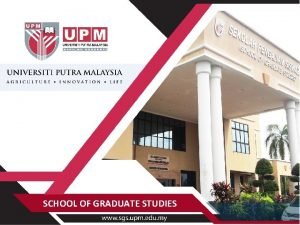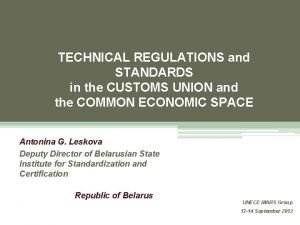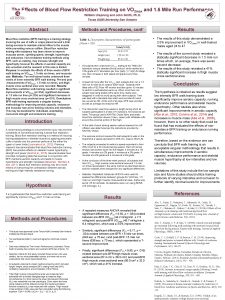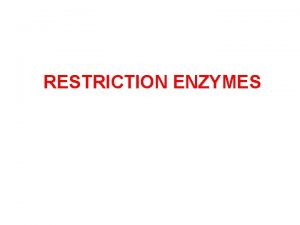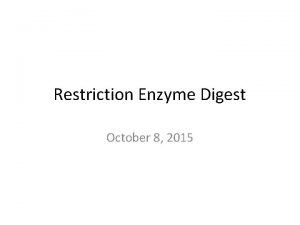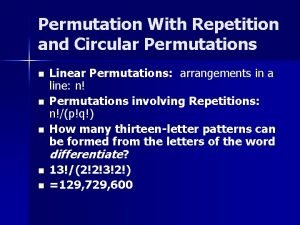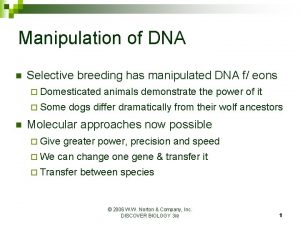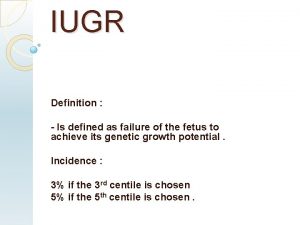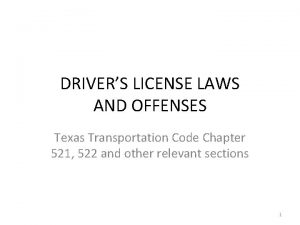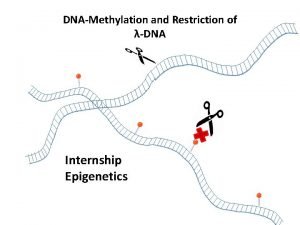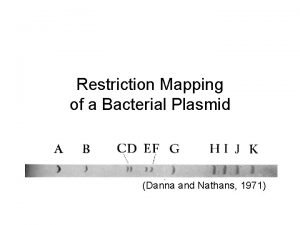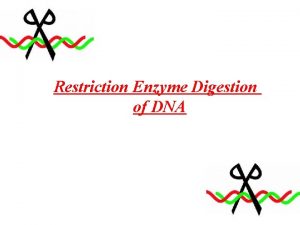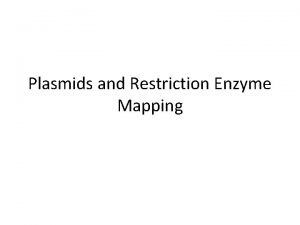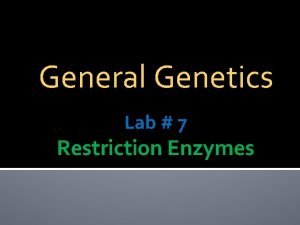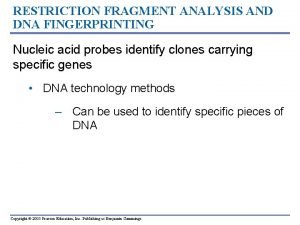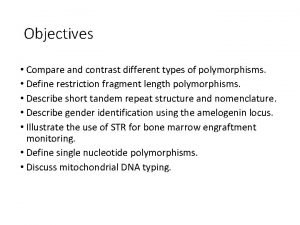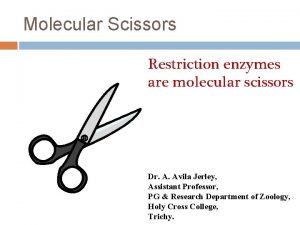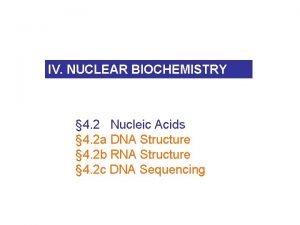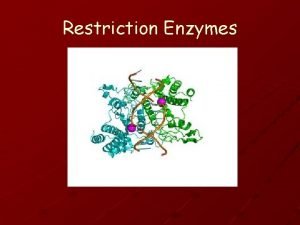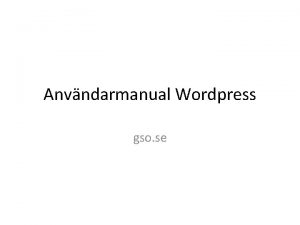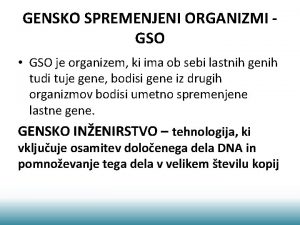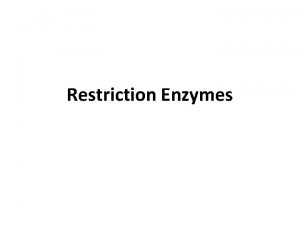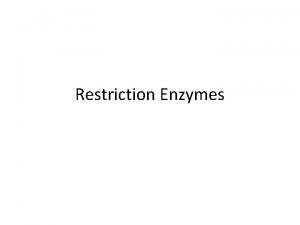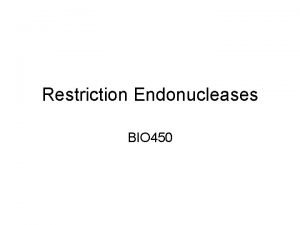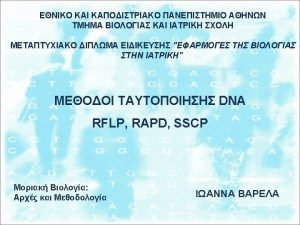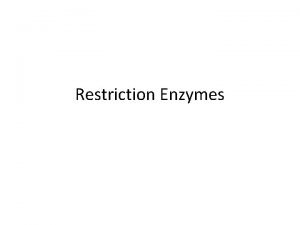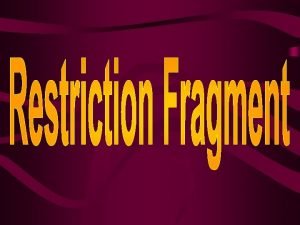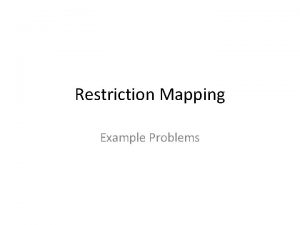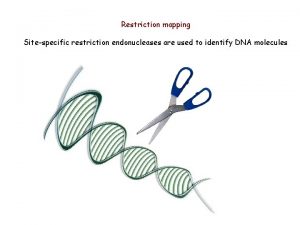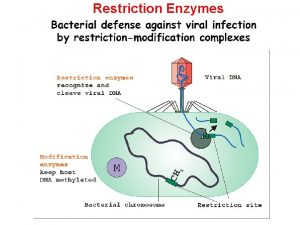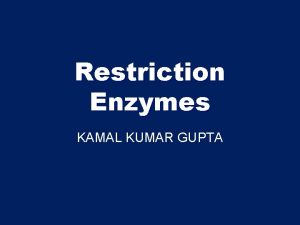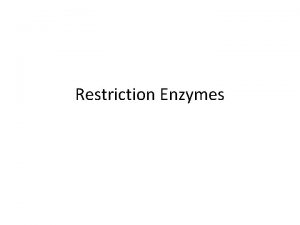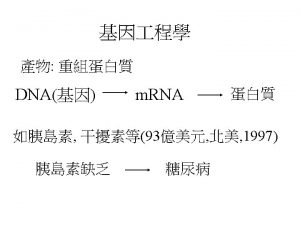GSO and its Technical Regulations on the Restriction



































- Slides: 35

GSO and its Technical Regulations on the Restriction of the Use of Certain Hazardous Substances (Ro. HS) Sufyan Al-Irhayim, Ph. D. Director, Conformity Assessment, GSO 16 May, 2017 sufyan@gso. org. sa

Content Introduction GSO in brief GSO Quality Infrastructure GSO Technical Regulation for Ro. HS G-Mark Conclusion

• Regional Standardization Organization • Established under the umbrella of the Gulf Cooperation Council for the Arab States of the Gulf (Muscat, Dec. 01) • Succeeding the GSMO (Est. 1984) • Assumed operation in May 2004 • Headquarter: Riyadh, Kingdom of Saudi Arabia

United Arab Emirates GSO is a not-for-profit organization that serves as an “Umbrella Organization” for the GCC Standards, Conformity Assessment and Metrology systems. The Republic of Yaman Kingdom of Bahrain Kingdom of Saudi Arabia State of Kuwait State of Qatar Sultanate of Oman

GSO Strategy Deployment Aim at achieving free circulation of products through: Removal of technical barriers to inter- and intra-GCC trade • deriving from national technical regulations (mandatory standards), testing, and certification procedures. And consumers protection through: Setting up the essential requirements to safety and security • and providing effective technical tools to translate them technically and to attest conformity to them.

Strategic Objectives Meeting GCC economic development needs of the GCC Custom Union & Common Market • via a regional approach (conformity assessment, metrology and accreditation). Capacity building. Participation of all stakeholders. Spreading “Standardization” awareness. • Building and implementation of sound standardization infrastructure & practices. Positive participation in various international forums & activities (i. e. ISO’s TC…)

GSO Main Functions Formulation, preparation and publication of Gulf Standards and Technical Regulations. Formulation of Gulf Conformity Assessment Procedures, legal and industrial Metrology, Quality and other related standardization activities on the GCC level. Protection of consumer, health, safety, & environment Facilitation of intra/ inter GCC trade through elimination of technical barriers to trade. Assisting GCC Industries through harmonization of standardization activities. Serving the needs and requirements of the GCC Customs Union and single entry point.

GSO in brief GSO Achievements Establishing the GCCLAB Establishing the Gulf Accreditation Center (GAC)

GSO Quality Infrastructure System

GCC Technical Infrastructure Common Legal Frame Work GCCLAB Standards and Technical Regulations Policy, regulation, contracts Claims of conformity, verification, certification National Standardization Bodies GSO Directory Governments industry groups consumer groups government and private proficient bodies undertaking: • Calibration • Testing • Inspection • Certification • Verification • Self-declaration Accreditation, peer assessment Metrology (measurement and physical standards) Recognition of technical competence National Metrology Institutes Designated Institutes. Technical outcomes that society can trust, and make risk management and investment decisions on

Stakeholders involvement in GSO activates Propose new TC or WG Propose New Standards Comment on Draft Standards Others GSO Action, voting GSO TCs Action GSO Action

Standardization Activities in GCC GSO issues three types of documents: Number of GCC Standards and Technical Regulations is more than 22, 000 normative documents. Technical Regulations (mandatory Standards). most of them are adoption of ISO, IEC, OIML and CAC. Standards (voluntary Standards). Covering major economic sectors. Conformity Assessment Procedures or Guides. GSO technical policy is internationally oriented.

RCAS Study

GCC Conformity Assessment Scheme Regional Conformity Assessment Scheme (RCAS) Technical regulations (TRs) development based upon essential requirements (health, safety, and environment) Adoption of the European New and Global approach as model in developing the “Gulf unified Regulatory System for Product Monitoring - GRSPM”, GSO standards will give presumption of conformity to new regulations. Creation of a Gulf Conformity Mark, Unified regulatory regime for GCC market surveillance, Unified law on product liability

Institutions • Gulf Committee for Conformity Assessment • technical regulations development • General Committee for Standardization • responsible for standards development • Interface procedure • to ensure effective coordination leading to a gradual change from mandatory to voluntary standards

GCC Committee for Conformity Assessment GCCA Comprises representatives from all member states. Drafting the GCC Technical Regulations in the light of the essential requirements of products. Drafting the GCC Conformity Assessment Procedures based upon Modular Approach Drafting a guide for selecting and registering notified bodies. Drafting a unified customs guidelines Developed a Market Survey Guidelines Developed the unified products Liability Law

Legal Framework • Comprises legal instruments for: • Defective products liability, • General Requirement for Safety of products, and respective responsibilities of Economic Operators, • Respective roles of Government and others CABs • Market Monitoring procedures • Ongoing work is leading to a single law on : • "Safety of Manufactured Products"

Two parts of compliance monitoring system • PRE-MARKET ASSESSMENT • • Products must fulfil essential requirements. Responsibility of the manufacturer (or importer) • POST-MARKET CONTROL • • Member States ensure that products in their markets are compliant MSA conduct market surveillance

Approach to Conformity Assessment Role of Manufacturer • Manufacturer (or authorised representative) is responsible for conformity, therefore: • • • He shall use defined CAPs, Most CAPs need the intervention of third-party Conformity Assessment Bodies. He is free to choose any suitable Notified Body, including those in the country of origin.

CAP - Role of Producers 1. 2. 3. 4. 5. 6. To determine applicable TRs and CAPs To choose suitable notified body (if applicable) To conduct applicable CAP To draw up the Technical File To issue the GCC declaration of conformity Affix the GCC conformity mark Free putting and circulation of products within the single market

Technical Regulations Horizontal TRs applicable to all types of products or risks: v General Safety of Products, v GCC Conformity Mark, v Notified Bodies Ø Other TRs applicable to specific types of products or risks: v Toys v Low Voltage Electric Products Ø Or TRs applicable to a specific product or risk: v Barley malt v Motor vehicles-Speed limiters: Technical requirements. Ø

Technical Regulations Toys Low Voltage Equipment Safety Regulation (Guidance) Construction materials Gulf Conformity Mark 18 Technical Regulations by the end of 2020 Cosmetics Machinery

Action plan for 2016 -2020 Sectors of priority Sector Cosmetics Technical Regulation Safety Regulation for industrial products (Guidance) Energy Conservation GSO Technical Regulation Electromagnetic compatibility GSO Technical Regulation Date Restriction of Hazardous Substances in Electrical and Electronic Equipment GSO Technical Regulation Lifts GSO Technical Regulation Machinery GSO Technical Regulation Water Conservation Devices GSO Technical Regulation Medical Devices GSO Technical Regulation Equipment for explosive atmospheres GSO Technical Regulation 2018 2017 2018 2019 2020

GSO-TR on the Restriction of the use of certain Hazardous Substances

Ongoing Working Group from specialists in Member States Electronic Forum for exchanging views First draft prepared by Public Authority of Industry of Kuwait Based on EU Directive on Restriction of the use of certain Hazardous Substances in Electrical and Electronic Equipment

SCOPE 1. 2. 3. 4. 5. 6. 7. 8. 9. Large household appliances. Small household appliances. IT and telecommunications equipment. Consumer equipment. Lighting equipment. Electrical and electronic tools. Toys, leisure and sports equipment. Medical devices. Monitoring and control instruments including industrial monitoring and control instruments. 10. Automatic dispensers. 11. Other Electrical and Electronic Equipment (EEE) not covered by any of the categories above.

The Restriction of the use of certain Hazardous Substances The scope doesn’t include: 1. Equipment for the protection of the security of Member States, including arms, munitions and war material intended for military purposes; 2. Equipment designed to be sent into space; 3. Equipment which is part of another equipment that does not fall within the scope of this Directive; 4. Large-scale stationary industrial tools; 5. Large-scale fixed installations; 6. Means of transport for persons or goods, excluding electric two-wheel vehicles which are not type-approved;

The Restriction of the use of certain Hazardous Substances The scope doesn’t include: 7. Non-road mobile machinery made available exclusively for professional use; 8. Active implantable medical devices; 9. Photovoltaic panels; 10. Equipment specifically designed for research and development.

Conformity Assessment Manufacturer Inte l rna duc Pro tion l tro Con

Market Monitoring Member States to develop and monitor: 1. Complaints & accidents 2. Market surveillance 3. Risk assessment and information exchange 4. Data bases Products, producers, importation operations…

The Restriction of the use of certain Hazardous Substances The draft will include the following: Maximum concentration tolerated for hazardous substances in EEE Obligations of Manufacturers Obligations of Authorized Representatives Obligations of Importers Obligations of Distributors

The Restriction of the use of certain Hazardous Substances Identification of economic operators Conformity Assessment Procedure Gulf Conformity Mark GSO declaration of conformity Presumption of conformity

The Restriction of the use of certain Hazardous Substances Market surveillance and controls of EEE entering the GSO market Applications exempted from the restriction (For example): Mercury in single capped (compact) fluorescent lamps not exceeding (per burner): For general lighting purposes < 30 W: 5 mg Lead in glass of fluorescent tubes not exceeding 0, 2 % by weight

The Restriction of the use of certain Hazardous Substances Applications exempted from the restriction specific to medical devices and monitoring and control instruments (For example): Lead, cadmium and mercury in detectors for ionising radiation Cadmium in X-ray measurement filters

Thank you WWW. GSO. ORG. SA @GSO_ORG_SA Dr. Sufyan Al Irhayim sufyan@gso. org. sa
 Gso ro
Gso ro Upm phd graduation requirement
Upm phd graduation requirement Gymnasiale oberstufe bayern
Gymnasiale oberstufe bayern Stt protocol
Stt protocol Gsoc stipend
Gsoc stipend Customs union technical regulations
Customs union technical regulations Illustration of the steps in restriction digestion and pcr
Illustration of the steps in restriction digestion and pcr What is restriction digestion
What is restriction digestion Blood flow restriction protocol
Blood flow restriction protocol Application of restriction enzymes
Application of restriction enzymes Southern blotting animation
Southern blotting animation Molecular scissors wikipedia
Molecular scissors wikipedia Cronies calorie restriction
Cronies calorie restriction Circular permutation with restriction
Circular permutation with restriction Selective breeding definition biology
Selective breeding definition biology Carte de restriction linéaire
Carte de restriction linéaire Asymmetrical iugr
Asymmetrical iugr Iugr
Iugr Iugr cause
Iugr cause A restriction/appropriation of retained earnings
A restriction/appropriation of retained earnings Symmetrical growth restriction
Symmetrical growth restriction Iugr cause
Iugr cause Texas transportation code 521.025
Texas transportation code 521.025 Cla 1 restriction enzyme
Cla 1 restriction enzyme Restriction mapping
Restriction mapping Enzyme
Enzyme How to draw a restriction map
How to draw a restriction map Endonuclease restriction
Endonuclease restriction Restriction enzymes
Restriction enzymes Restriction enzyme analysis of dna ap bio lab
Restriction enzyme analysis of dna ap bio lab Restriction fragment length polymorphism
Restriction fragment length polymorphism Dna fragment length
Dna fragment length Restriction fragment length polymorphism
Restriction fragment length polymorphism Molecular scissors
Molecular scissors Restriction ends
Restriction ends Rflp analysis
Rflp analysis

